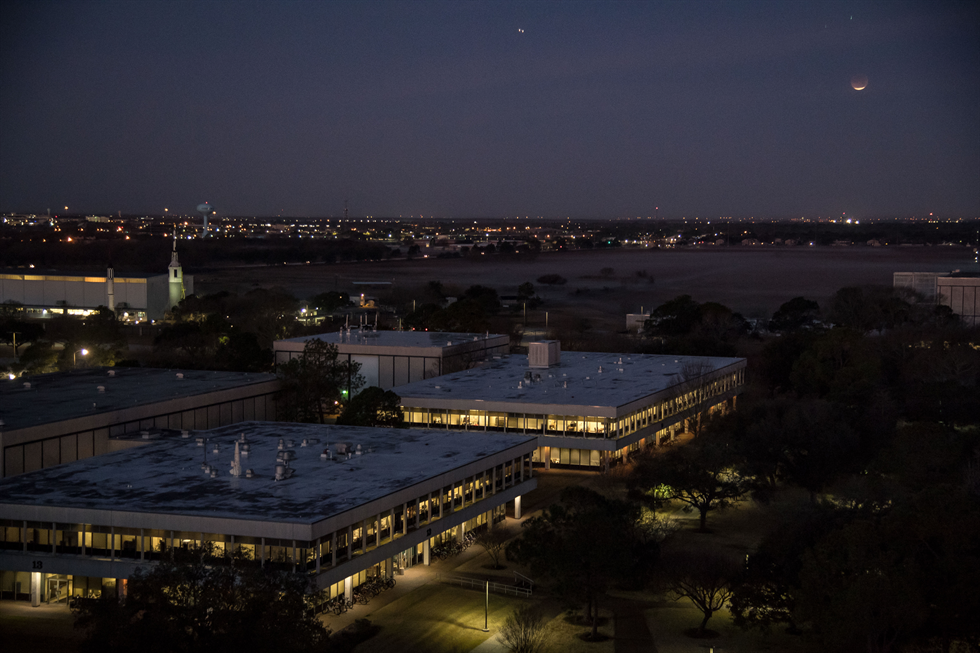Revenge of the super blue blood moon
2018-01-31
It may sound like the name of a horror flick, but the celestial show on Jan. 31 of the super blue blood moon (#SuperBlueBloodMoon for the social media savvy) was one that multitudes around the country roused themselves out of bed to glimpse or catch photos of.
Quick refresher, a.k.a., what happened in the sky this morning:
Viewers around the country saw the third in a series of “supermoons,” when the Moon is closer to Earth in its orbit—known as perigee—and about 14 percent brighter than usual, and a second full moon of the month, commonly known as a “blue moon.” The super blue moon passed through Earth’s shadow, giving sky watchers in the right location a total lunar eclipse. While the Moon is in the Earth’s shadow, it takes on a reddish tint, known as a “blood moon.”
Here, too, at Johnson Space Center, our own photographers couldn’t wait to capture the astronomic event for posterity. Behold: a very special Moon from various vantages around site.

A super blue blood moon, photographed from Johnson Space Center during sunrise on Jan. 31, 2018. Image Credit: NASA/Robert Markowitz
Quick refresher, a.k.a., what happened in the sky this morning:
Viewers around the country saw the third in a series of “supermoons,” when the Moon is closer to Earth in its orbit—known as perigee—and about 14 percent brighter than usual, and a second full moon of the month, commonly known as a “blue moon.” The super blue moon passed through Earth’s shadow, giving sky watchers in the right location a total lunar eclipse. While the Moon is in the Earth’s shadow, it takes on a reddish tint, known as a “blood moon.”
Here, too, at Johnson Space Center, our own photographers couldn’t wait to capture the astronomic event for posterity. Behold: a very special Moon from various vantages around site.

A super blue blood moon, photographed from Johnson Space Center during sunrise on Jan. 31, 2018. Image Credit: NASA/Robert Markowitz

The lunar eclipse "blood moon" as photographed from Johnson Space Center during the early morning hours of Jan. 31, 2018. Image Credit: NASA/Robert Markowitz

A composite photograph created from 13 images of the lunar eclipse through its phases as viewed from the ninth floor of Building 1. Image Credit: NASA/Norah Moran

A composite image of an Apollo lunar sample in front of the lunar eclipse blood moon. Image Credit: NASA/Josh Valcarcel and Bill Stafford







